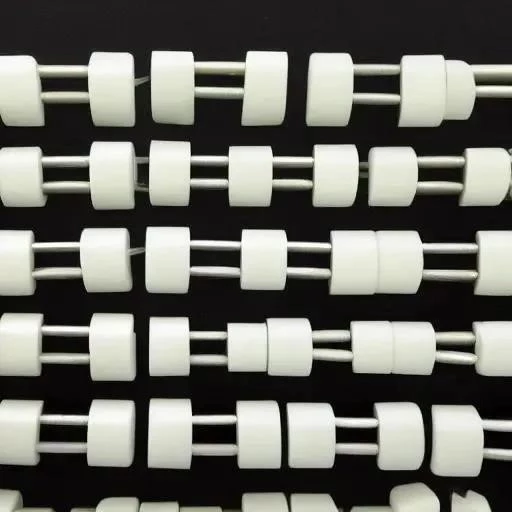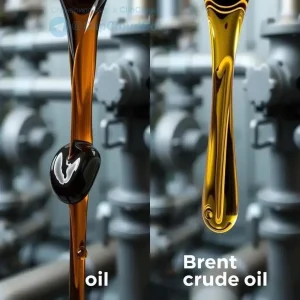Electrical Connectors: A Comprehensive Overview
Confused about electrical connectors? We break down the types, uses, and secrets to choosing the perfect connector for any project. Power up your knowledge now!

Electrical connectors are the unsung heroes of modern technology, quietly ensuring the seamless flow of power and data that keeps our world humming. From the intricate circuitry within our smartphones to the robust systems powering industrial machinery, these often-overlooked components play a crucial role in virtually every electronic device and application. Understanding the diverse array of electrical connectors and their specific functionalities is paramount for engineers, technicians, and anyone involved in the design, manufacturing, or maintenance of electrical systems. This overview will delve into the fascinating world of electrical connectors, exploring their various types, applications, and key considerations for selection.
Understanding the Basics of Electrical Connectors
At its core, an electrical connector is a device used to join electrical terminations and create an electrical circuit. Connectors can be used to connect wires to boards, wires to other wires, or any other combination you can think of. The primary function is to provide a reliable and consistent electrical connection while also offering mechanical support and protection.
Key Characteristics of Electrical Connectors
- Contact Resistance: A low contact resistance ensures minimal power loss and efficient signal transmission.
- Insulation Resistance: High insulation resistance prevents leakage current and ensures electrical safety.
- Durability: The connector must withstand repeated mating and unmating cycles without degradation.
- Environmental Resistance: Connectors should be resistant to temperature variations, humidity, and other environmental factors.
- Current and Voltage Rating: The connector must be able to safely handle the intended current and voltage levels.
Types of Electrical Connectors
The world of electrical connectors is vast and varied, with countless types designed for specific applications. Here are some of the most common categories:
Wire-to-Wire Connectors
These connectors join two or more wires together. Examples include:
- Butt Connectors: Used for splicing wires together end-to-end.
- Crimp Connectors: Provide a secure connection by crimping the connector onto the wire.
- Terminal Blocks: Allow for easy connection and disconnection of multiple wires.
Wire-to-Board Connectors
These connectors are used to connect wires to printed circuit boards (PCBs). Common types include:
- Headers: Provide a row of pins for connecting wires to a PCB.
- Sockets: Receive pins from other components, such as integrated circuits (ICs).
- Edge Connectors: Connect PCBs to other components or systems.
Board-to-Board Connectors
These connectors are used to connect two or more PCBs together. Examples include:
- Pin Headers and Sockets: Similar to wire-to-board connectors, but used to connect two PCBs.
- Card Edge Connectors: Connect a daughterboard to a motherboard.
- Stacking Connectors: Allow for stacking multiple PCBs on top of each other.
Power Connectors
Designed to handle higher currents and voltages for power delivery. Examples include:
- AC Power Connectors: Used for connecting devices to AC power outlets.
- DC Power Connectors: Used for connecting devices to DC power sources.
- Battery Connectors: Connect batteries to electronic devices.
Selecting the Right Electrical Connector
Choosing the appropriate connector is crucial for ensuring reliable performance and preventing failures. Consider the following factors:
- Application: What is the connector being used for?
- Current and Voltage Requirements: What are the maximum current and voltage levels?
- Wire Gauge: What is the size of the wire being used?
- Environmental Conditions: Will the connector be exposed to harsh environments?
- Mating Cycles: How many times will the connector be mated and unmated?
- Connector Size and Space Constraints: Does the connector need to fit in a small space?
- Cost: What is the budget for the connector?
Comparative Table of Connector Types
| Connector Type | Typical Application | Advantages | Disadvantages |
|---|---|---|---|
| Butt Connector | Splicing wires | Simple, inexpensive | Not reusable, can damage wires if crimped incorrectly |
| Terminal Block | Connecting multiple wires | Easy to connect and disconnect wires, organized wiring | Can be bulky |
| Header/Socket | Wire-to-board connection | Versatile, various sizes and pin counts | Can be fragile |
| AC Power Connector | Connecting to AC power | Secure connection, standardized | Specific to AC power applications |
Advancements in materials science and manufacturing techniques continue to drive innovation in electrical connector design. Miniaturization, for instance, is a key trend, with manufacturers developing increasingly compact connectors to meet the demands of smaller and more densely packed electronic devices. High-speed data transmission is another area of focus, leading to the development of connectors with improved signal integrity and reduced electromagnetic interference (EMI). Furthermore, the growing emphasis on sustainability is prompting the development of connectors made from environmentally friendly materials and designed for easier recycling.
Emerging Trends in Electrical Connector Technology
The landscape of electrical connector technology is constantly evolving, driven by the ever-increasing demands of modern electronics. Several key trends are shaping the future of connector design and application:
Increased Miniaturization
As electronic devices become smaller and more powerful, the demand for miniaturized connectors continues to grow. These connectors must maintain high performance and reliability while occupying minimal space. Advanced manufacturing techniques, such as micro-molding and laser ablation, are enabling the production of increasingly intricate and compact connector designs.
High-Speed Data Transmission
The need for faster data transfer rates is driving the development of connectors with improved signal integrity. These connectors employ advanced shielding techniques to minimize EMI and crosstalk, ensuring reliable transmission of high-speed signals. Differential signaling and impedance matching are also critical considerations in the design of high-speed connectors.
Enhanced Environmental Resistance
Many applications require connectors to operate in harsh environments, such as extreme temperatures, humidity, and exposure to chemicals. Connectors designed for these environments incorporate specialized materials and sealing techniques to protect against corrosion, moisture ingress, and other forms of environmental degradation. These robust connectors are essential for applications in industries such as aerospace, automotive, and industrial automation.
Smart Connectors
The integration of sensors and microprocessors into connectors is enabling the development of “smart” connectors that can monitor their own performance and provide valuable data to the host system. These smart connectors can detect anomalies such as overheating, excessive vibration, or degradation of contact resistance, allowing for proactive maintenance and preventing potential failures. This technology is particularly useful in critical applications where downtime is unacceptable.
Compliance and Standardization
The electrical connector industry is governed by a variety of standards and regulations to ensure safety, performance, and interoperability. Adherence to these standards is essential for manufacturers to ensure that their products meet the required specifications and can be used safely in a wide range of applications.
Key Standards Organizations
- IEC (International Electrotechnical Commission): Develops international standards for electrical, electronic, and related technologies.
- IEEE (Institute of Electrical and Electronics Engineers): Focuses on standards for specific technologies, such as Ethernet and USB.
- UL (Underwriters Laboratories): A global safety certification company that tests and certifies products for safety.
- SAE (Society of Automotive Engineers): Develops standards for the automotive industry, including connectors used in automotive applications.
Compliance with these standards ensures that connectors meet minimum performance requirements, are safe to use, and are compatible with other components in the system. Furthermore, proper documentation and certification are crucial for demonstrating compliance and building trust with customers. As we move towards more complex and integrated electronic systems, it is evident that the crucial significance of high-quality electrical connectors can not be overstated.
Future Directions in Electrical Connector Design
The trajectory of electrical connector technology points towards increasingly sophisticated and application-specific solutions. The drive for higher density, greater bandwidth, and enhanced reliability will continue to shape the industry. Furthermore, the growing importance of sustainability will necessitate the development of eco-friendly materials and manufacturing processes.
Advanced Materials
The quest for improved connector performance is driving research into advanced materials. These materials include high-performance polymers, advanced alloys, and composite materials. High-performance polymers offer excellent dielectric properties, chemical resistance, and mechanical strength, while advanced alloys provide superior conductivity and corrosion resistance. Composite materials can be tailored to provide specific combinations of properties, such as high strength and low weight.
3D Printing and Additive Manufacturing
3D printing and additive manufacturing technologies are revolutionizing the way connectors are designed and manufactured. These technologies enable the creation of complex geometries and custom designs that are not possible with traditional manufacturing methods. 3D printing can also be used to produce connectors with integrated sensors and other functionalities, opening up new possibilities for smart connectors and embedded systems.
Wireless Connectivity
While wired connections remain essential for many applications, the integration of wireless connectivity into connectors is gaining traction. Wireless connectors can eliminate the need for physical cables, simplifying installation and reducing the risk of cable damage. These connectors typically incorporate technologies such as Bluetooth, Wi-Fi, and Zigbee, enabling seamless communication between devices.
Automation and Robotics
Automation and robotics are playing an increasingly important role in the manufacturing of electrical connectors. Automated assembly lines can improve efficiency, reduce costs, and ensure consistent quality. Robots can perform tasks such as wire stripping, crimping, and connector insertion with greater precision and speed than human operators. The use of automation also enables the production of smaller and more complex connectors.
Maintenance and Troubleshooting
Proper maintenance and troubleshooting are essential for ensuring the long-term reliability of electrical connectors. Regular inspection, cleaning, and lubrication can help prevent corrosion, contamination, and other forms of degradation. When troubleshooting connector problems, it is important to follow a systematic approach to identify the root cause of the issue.
Inspection
Regularly inspect connectors for signs of damage, such as cracks, corrosion, or loose contacts. Use a magnifying glass or microscope to examine the connector closely. Pay particular attention to areas that are exposed to harsh environments or subject to frequent mating cycles.
Cleaning
Clean connectors with a suitable cleaning solution to remove dirt, dust, and other contaminants. Use a soft brush or swab to gently scrub the connector. Avoid using abrasive cleaners, as they can damage the connector surface.
Lubrication
Lubricate connectors with a suitable lubricant to reduce friction and prevent corrosion. Use a small amount of lubricant and apply it evenly to the connector contacts. Avoid using excessive lubricant, as it can attract dirt and dust.
Troubleshooting Techniques
When troubleshooting connector problems, start by visually inspecting the connector for any obvious signs of damage. Use a multimeter to check for continuity and voltage levels. If possible, try replacing the connector with a known good connector to see if the problem is resolved. Document all troubleshooting steps and results to help identify the root cause of the issue.




